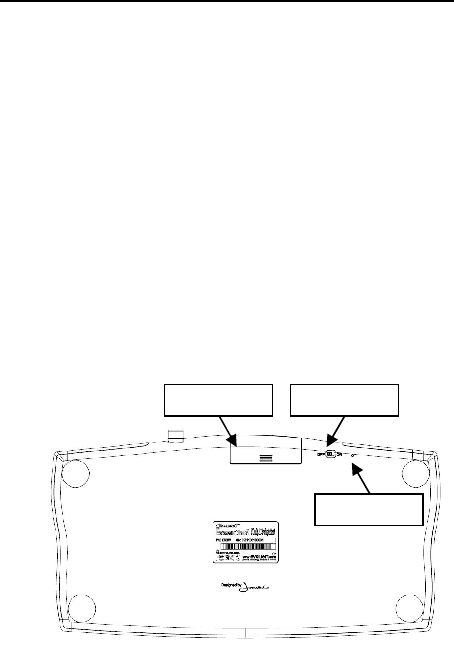Jing Mold Electronic Technology ERK-10DA Wireless Keyboard User Manual Manual
Jing Mold Electronic Technology (Shen Zhen) Co., Ltd. Wireless Keyboard Manual
Users manual

Essentials Wilress Full Freatured
Compact Keyboard
User’s Guide

1
Federal Communications Commission Radio(FCC)
Statement
This equipment has been tested and found to
comply with the limits for a Class B digital device,
pursuant to part 15 of the FCC Rules. These limits
are designed to provide reasonable protection
against harmful interference in a residential
installation. This equipment generates, uses and
can radiate radio frequency energy and, if not
installed and used in accordance with the
instructions, may cause harmful interference to
radio communications. However, there is no
guarantee that interference will not occur in a
particular installation. If this equipment does cause
harmful interference to radio or television reception,
which can be determined by turning the equipment
off and on, the user is encouraged to try to correct
the interference by one or more of the following
measures:
—Reorient or relocate the receiving antenna.
—Increase the separation between the equipment
and receiver.

2
—Connect the equipment into an outlet on a circuit
different from that to which the receiver is
connected.
—Consult the dealer or an experienced radio/TV
technician for help.
Operation is subject to the following two
conditions:
(1) this device may not cause harmful interference,
and
(2) this device must accept any interference
received, including interference that may cause
undesired operation.
Caution!
The manufacturer is not responsible for any radio
or TV interference caused by unauthorized
modifications to this equipment. Such
modifications could void the user authority to

3
operate the equipment.
R & TTE Compliance Statement
This equipment complies with all the requirements of
the DIRECTIVE 1999/5/EC OF THE EUROPEAN
PARLIAMENT AND THE COUNCIL OF 9 March 1999
on radio equipment and telecommunication terminal
equipment and the mutual recognition of their
conformity (R & TTE).

4
1 Feature
l Transmission mode: RF 2.4G
l Frequency: 2402~2480MHz
l RF channel quantity: 79
l Bandwidth of Channel: 1MHz
l Data send timing: <500us
l Keyboard power: 2 × AAA batteries
l Receiver power: 5V
l Modulation mode: GFSK
l Effective distance: 10m
l Number of keys: 96 keys
l Low battery indicating voltage:2.0V@5%
l Operational Temperature: +5 ~ +40℃
2 System Requirements
n Microsoft Windows 98/ME/2000/XP/Vista/7 or
later version
n An available USB port
3 Installation & Use

5
n Plug the USB receiver into a computer’s USB port:
□ Windows 98 SE/ME
The system finds new device and prompts you to
insert the operating system CD-ROM. Follow the
instructions on the screen to install the required
drivers.
□ Windows 2000/XP/Vista/7
The operating system identifies the receiver as a
“USB Human Interface Device” and begins
installation automatically. When completed, the
system will prompt that “You new hardware is
installed and ready to use.”
n Remove the keyboard battery compartment cover.
Connect Button
Battery Cover
Power Switch

6
n Install batteries with the positive (+) & negative (-)
in the correct direction indicated by the AAA
battery compartment label.
n Replace the battery compartment cover.
n Switch on the Keyboard.
n Before first time of use, you need to pair the
keyboard to the receiver as below:
Use a paperclip, pen or pointed object to press
into the reset pin hole on the back of the keyboard,
the LowBatt Led will twinkle. Plug the receiver int
the PC’s USB port, the LED will be off if it is
successfully paired.
n Keyboard LED function
Low Battery----This LED will be lit if the
battery power is low, you should replace the
battery right now.